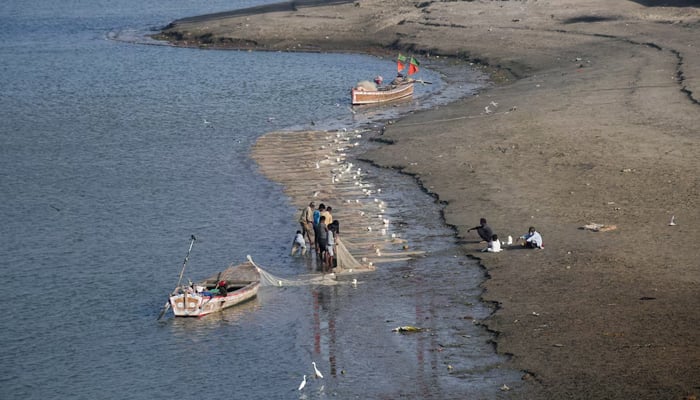Water expert Engineer Arshad H Abbasi stated on Monday that India’s proposed expansion of the Ranbir Canal could significantly reduce Pakistan’s water supply from the Chenab River by nearly 20%.
Abbasi, a water expert who participated in Track-II diplomacy with India on water issues, quantified this potential loss as exceeding five million acre-feet (MAF) of water annually. This volume of water is estimated to be worth $10 billion in the global market and would represent a devastating blow to Punjab, which is considered the agricultural heartland of Pakistan.
On May 16, Reuters unveiled a concerning report indicating that India is considering curtailing Pakistan’s water supply through an expansion of the Ranbir Canal on the Chenab River. The project aims to double the canal’s length from 60 kilometers to an extensive 120 kilometers.
Abbasi explained that the average flow in the Chenab River is approximately 28,000 cusecs.
“While India has historically utilized the Ranbir Canal, a 19th-century irrigation channel that predates the 1960 Indus Waters Treaty (IWT), the planned project expansion raises serious questions about its compliance with the treaty. Annexure C of the IWT explicitly governs India’s agricultural use of water from western rivers like the Chenab, imposing strict limits on withdrawals.”
The precise adherence of water withdrawals from the Chenab to the quantities defined in the Indus Waters Treaty remains information exclusively known to Pakistan’s Ministry of Water Resources and the Indus Waters Commissioner. The practical implementation and monitoring of these provisions are currently fraught with ambiguity.
Under Article VI of the treaty, both India and Pakistan are obligated to regularly exchange river and canal data. However, the data provided by India is typically in hard copy format, delivered via fax or postal services, which raises significant concerns regarding its accuracy and transparency. The treaty permitted Pakistan to inspect the watersheds of the Jhelum, Indus, and Chenab rivers two or three times annually.
Nevertheless, the suspension of the treaty and the prevailing geopolitical tensions have disrupted these critical inspections, leaving many vital questions unanswered.
The press note explicitly states that the treaty allows for a maximum withdrawal of 1,000 cusecs from April 15 to October 14, and 350 cusecs from October 15 to April 14.
Should India indeed operate the Ranbir Canal at its fullest capacity, this would constitute a clear violation of the treaty, with severe repercussions for downstream water flows into Pakistan.
Abbasi mentioned that in 2008, he submitted a proposal to the Ministry of Water Resources advocating for the installation of a real-time telemetry system on the three western rivers downstream of the Baglihar Dam, a proposal that was never implemented.
In contrast, Abbasi pointed out, India and China have successfully implemented a real-time river flow data-sharing system on both the Brahmaputra River and the Sutlej River.
Abbasi noted that the Ranbir and Pratap Canals Project, estimated to cost $41 million and $18 million respectively (as per 2008-09 estimates), was conceived in 2003 and projected to be completed in 14 and 12 years. However, these projects remained dormant until now, when New Delhi appears determined to weaponize water.



